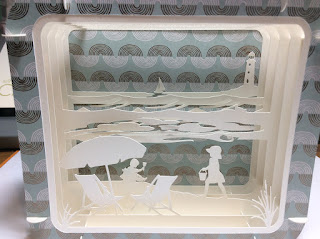A STEM project that compares four different types of cam and followers.
The four followers are a flat follower, curved follower, roller follower and a knife or point follower.
Here is a video of the cam mechanisms in action.
A cam mechanism is a type of linkage for a machine which transmits power from a rotational motion into a linear motion. This mechanism consists of three parts, a cam, a follower and a slide. These parts are mounted in a box attached to an axle. The movement of the axle turns the cam which in turn moves the follower up and down inside the slide. The slide provides stability for the follower.
Cams can be made into different shapes. The shape and size of the cam determines the amount of movement and distance the follower will traverse. The type of cam also determines the direction the cam can operate when the axle is turne, clockwise or counterclockwise. The four most common shapes are circular, snail or drop, pear and heart-shaped or constant velocity. Each cam is used for different purposes.
An eccentric circular cam is used in the crankshaft of a car engine. The cam is off center and the follower moves up and down with a continuous oscillating motion.
A snail or drop cam is used in a production line to produce evenly spaced holes or cuts in an item. The snail cam can only rotate in one direction as the follower remain stationary for a half of a turn before suddenly falling. The snail cam produces one event per revolution.
A pear cam is used in car engines to control valves which do not need to move frequently. This cam has a long dwell time whereby the follower does not move.
A heart-shaped cam or constant velocity is used in a sewing machine to wind bobbin because the thread needs to be wound evenly and steady. The follower rises and falls with no stationary period with a uniform velocity.
The purpose of a follower is to move up and down to follow the edge of a cam. The more precise the follower, the more accurate the movement will be. Followers can be made into three different types. The three types are flat, point or knife, and roller.
A flat follower has a lot of friction because it sits flatly on the cam and it is not very accurate. It is used because it can stand up well under a heavy load.
A point or knife follower has a narrow point to follow a cam. It is very accurate with low friction but the point wears down quickly.
A roller follower has low friction. It is accurate and can withstand a load but they are costly to produce. I have two versions of this follower. One version is a rounded edge and the other has an axle with a rotating roller.
Make the Large Presentation Box
Using the directions from this blog posting, make the large presentation box. https://papercraftetc.blogspot.com/2019/02/rectangular-and-square-presentation-box.html
The Cam Mechanism
Here is the PDF. I used 65 lb cardstock.
https://drive.google.com/file/d/1mrvY1l8nzSDPN0Vwsb2hxu_d-wKCa8QZ/view?usp=sharing
Here is the .Studio file for the Silhouette.
Here is the .Studio file for the Silhouette.
Here is the SVG for all other cutting machines. The file goes beyond the viewable area. Zoom out to see the entire file.
https://drive.google.com/file/d/1ATirv5IeICyrOtVwqECPwg9lxfqY8ksr/view?usp=sharing
https://drive.google.com/file/d/1ATirv5IeICyrOtVwqECPwg9lxfqY8ksr/view?usp=sharing
Make the Sliders
Fold and glue the four sliders. Glue the slider tabs to the top piece as shown above.
Apply glue to the top surface of the presentation box and adhere the four sliders.
Fold and glue the axle as shown above.
Make the Cam
The V-shaped protrusions should be facing outward after the cams are glued together.
Make the Followers
Fold follower #1 and apply glue as shown. Adhere and make into a rectangular prism.
Apply glue to the tabs and insert into the center of the square. Adhere the tabs. Apply glue as shown and adhere the square.
The ends of the followers should look as above. In the photo above, they are a flat follower,
a curved follower, a roller follower and a point follower.
Assemble the Cam Mechanism
Slide the cams onto the axle.
Insert the flat follower into the bottom of the first slide.
Insert the end of the axle into the side of the presentation box and slide on the decorative gear. Apply glue to the tabs of the axe and adhere to the decorative axle.
Glue on the second decorative gear.
Repeat for the opposite side by gluing on the axle to the decorative gear. Make a handle for the second decorative gear as shown above. Glue on the decorative handle.
Insert the followers into the sliders. Make sure the curved follower is curved facing forward.
Align the cams so that they are in the middle of the slider.
Please note that this cam mechanism is directional because of the snail cam.






















